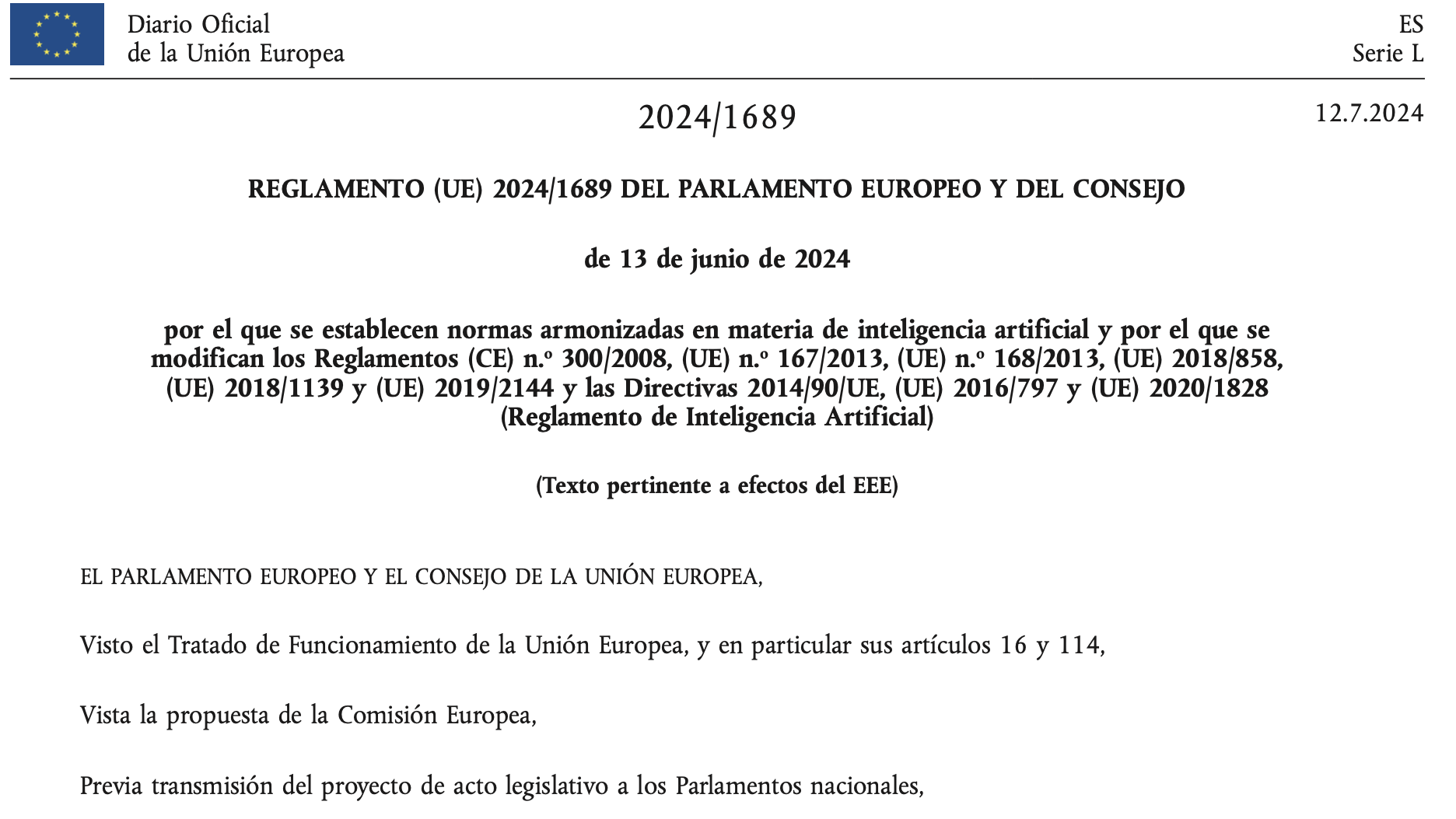In December, we explored the AI Act and its impact on digital transformation. Now, with the recent approval of the Regulation (EU) 2024/1689 of the European Parliament and the Council, it is crucial to understand how this regulation will affect the technological strategy and the management of people in companies.

Objectives and key areas of the regulation
The AI Regulation sets out harmonised rules to ensure that AI systems in the EU are safe, ethical and respectful of fundamental rights. The main objectives include:
- Security and fundamental rights : Ensure that AI systems on the European market do not put people's safety, livelihoods and rights at risk.
- Fostering innovation : Create an environment of trust that fosters responsible innovation in AI.
- Ethical and Responsible Use : Promote the adoption of AI in critical sectors in an ethical and responsible manner.
Risk classification
The regulation classifies AI systems according to their risk:
- Unacceptable risk : Systems banned because they pose a significant threat.
- High risk : Systems subject to strict requirements for transparency, security and human oversight, especially in critical infrastructure, education and essential public services.
- Limited risk : Systems with lighter transparency obligations, such as chatbots that must inform users that they are interacting with an AI.
Requirements for high-risk AI systems
For high-risk systems, the regulation imposes:
- Rigorous evaluations before implementation.
- Obligation to maintain records and detailed technical documentation.
- Guarantees of quality and robustness, ensuring that the systems work as expected and without failures.
- Constant human supervision to mitigate potential risks.
Promoting innovation
The regulation seeks to foster an enabling environment for responsible innovation, providing a clear and predictable framework. Companies can access EU funds and programmes for AI projects, incentivising investment in new technologies. This regulation allows European companies to better compete in the international market by adhering to globally recognised quality standards.
International competitiveness
By setting clear rules, the EU is positioning itself as a global leader in ethical and safe AI. This not only strengthens the European Digital Single Market, but also facilitates the penetration of European companies into international markets.
Impact on people management
Job creation
The implementation of the regulation is expected to generate employment in key areas such as AI development, AI systems auditing, and regulatory compliance. In addition, continuous training and AI skills updating for workers will be promoted, ensuring that the workforce is prepared to face technological challenges.
Protection of rights
The regulation protects citizens' rights from potential abuse and misuse of AI. It ensures transparency and human oversight in critical AI systems, increasing public trust in these technologies.
Opportunities and threats
Opportunities
- Trusted environment : The regulation creates an environment of trust that facilitates the adoption of AI technologies.
- Digital Single Market : Strengthens the Digital Single Market, making the EU more competitive.
- Investment in technology : Investment in emerging technologies and innovative AI projects increases.
Threats
- Over-regulation : There is a risk that over-regulation will slow down AI innovation and adoption.
- Balance of protection and flexibility : It will be necessary to balance the protection of rights with flexibility for innovation.
Regulation (EU) 2024/1689 is a milestone in the regulation of artificial intelligence. For business decision-makers, understanding its implications is essential to adjust their technological and people management strategies. The regulation not only ensures a safe and ethical use of AI, but also provides a framework that promotes innovation and global competitiveness.
By integrating these principles into their strategy, companies can not only comply with new regulations, but also seize opportunities to lead in an increasingly digitized and AI-based global marketplace. The key will be to balance the protection of rights and security with the need to maintain flexibility and the ability to innovate.
